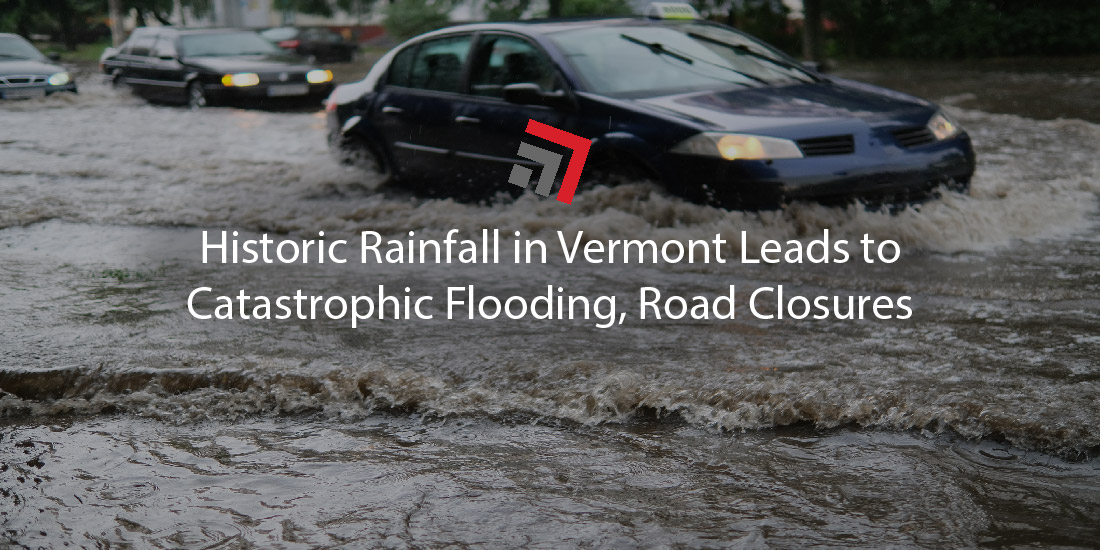It’s exceedingly rare when the national spotlight is fixated on Vermont.
But, amid widespread flooding across the Green Mountain state earlier this week, Vermont Governor Phil Scott has had everyone’s attention—and for a grim reason: “[The devastation and flooding] is historic and catastrophic,” Scott said Tuesday.
And, while water levels are receding, communities are now left assessing the catastrophic damage left behind by this week’s historic storm.
A two-day deluge slams Vermont, resulting in statewide flooding
This isn’t a run-of-the-mill flood by any means either. Vermont residents aren’t just seeing their basements being skimmed with water or an occasional boulevard marred with puddles.
The present flooding is rivaling levels received from the planet’s strongest storms—hurricanes.
According to the governor, floodwaters in some areas of Vermont have surpassed levels seen during Tropical Storm Irene. Irene was a fatal and costly storm that breached the U.S. East Coast as a hurricane in 2011.
Suffice to say, the impacts will take more than a Shop-Vac to cleanup. Thousands of homes and businesses have been claimed by the flooding, while the state’s capital, Montpelier, has issued a travel ban throughout Tuesday.
Montpelier also put into effect a boil water notice as floodwaters may contaminate drinking water supplies.
Vermont’s capital saw a record-breaking 5.28 inches of rainfall Monday, per NWS Burlington. For reference, Irene soaked Montpelier with 5.27 inches of rain.
Governor Scott went on to add, “Irene had about a 12-hour duration of rain, and then it was over…This is different. We’ve had like 48 hours of steady rain.”

Montpelier had knee to waist-deep water levels Tuesday while Vermont remains under a state of emergency. Over 100 rescues and evacuations have been waged so far, with neighboring states offering crews and assets to assist their New England friend.
The White House has also been in contact with Governor Scott and other state officials.
State highways and interstates are among countless road closures
Clearly, if the state capital is submerged along with countless numbers of homes and businesses, the prognosis for Vermont’s roadways can’t be great either.
Courtesy of NBC5, it’s been road closure galore across the state.
Of Vermont’s 14 counties, nine of them were listed yesterday containing roads closed off to motorists. Many miles of state highway and interstate are closed as local officials work to clear roadways of dangerous waters, flood damage, and even mudslides.
As floodwaters recede, it’s still uncertain on when these numerous roads will be safe enough for motorists to travel on.
In addition to heeding these advisories, commercial truck drivers should also exercise common sense and good judgement. Aside from immediate danger, it can also be a maintenance nightmare for any heavy-duty truck that braves such conditions.
Final Thoughts
Weather forecasts indicate a break in precipitation for now, however downpours are likely to return Friday—posing a slight threat of reaggravating water levels as the ground remains saturated.
While officials are on high alert of this risk, current conditions have alleviated through Wednesday.
Please refer to the Vermont Public’s updated coverage of the situation for any new developments.
Please contact us if you have any questions regarding this topic or any others in domestic logistics. In addition, stay up to date with weekly headlines from both trucking and rail via our Road Map newsletter.
More blogs similar to this:



Recent Comments